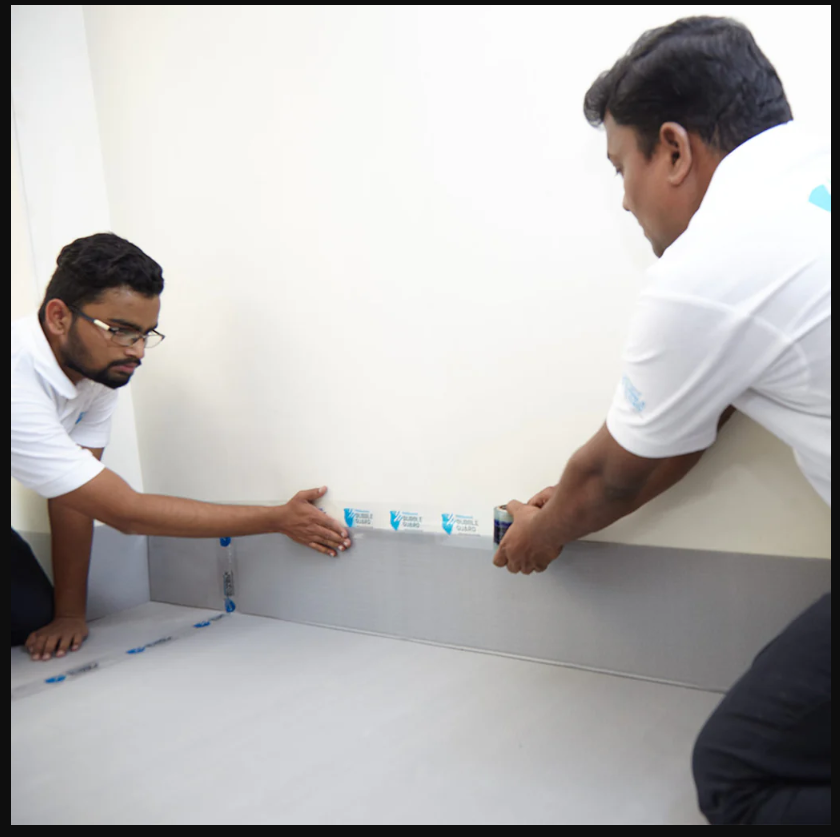When it comes to protecting floors during construction, renovation, or interior finishing, prevention is always better than cure. One small scratch or chemical spill can lead to expensive damage, especially with premium flooring materials like tiles, wood, vinyl, or marble. That's why the use of PP floor protection sheet solutions has grown significantly in recent years across the construction and interior design industry.
These innovative sheets offer a practical, cost-effective, and environmentally conscious way to prevent damage, reduce cleaning time, and maintain the pristine condition of flooring surfaces.
What Is a PP Floor Protection Sheet?
A PP floor protection sheet is a type of plastic sheeting made from polypropylene (PP), a thermoplastic polymer known for its strength, chemical resistance, and lightweight properties. Unlike traditional materials like cardboard, paper, or cloth, polypropylene sheets are specifically engineered for durability and reusability.
These sheets come in different thicknesses, textures, and sizes, catering to various types of flooring and project needs. Whether it’s a commercial construction site or a home renovation project, they serve as a temporary yet robust barrier between foot traffic, tools, materials, and the floor surface.
Benefits of Using PP Floor Protection Sheet in Projects
The surge in popularity of pp floor protection sheet solutions is due to a combination of performance, practicality, and sustainability. Here are some of the key benefits:
1. Impact and Scratch Resistance
Heavy foot traffic, dropped tools, and dragging furniture are common occurrences in construction zones. A pp floor protection sheet offers excellent resistance to physical damage, ensuring that the floor underneath remains unscathed.
2. Waterproof and Chemical Resistant
Unlike paper- or fabric-based protection methods, polypropylene sheets do not absorb water or chemicals. This makes them ideal for protecting floors from spills of paint, adhesives, cleaning agents, and even water from plumbing tasks.
3. Reusable and Long-Lasting
These sheets can be used multiple times, making them a more sustainable option than single-use cardboard or paper boards. After completing one project, the same sheet can be rolled up, stored, and reused for another site, reducing waste and cost.
4. Non-Staining and Dust-Free
Materials like newspaper or jute can sometimes leave stains, lint, or residue on floor surfaces. A pp floor protection sheet is clean, non-abrasive, and does not leave any marks or dust behind, preserving the aesthetics of premium flooring.
5. Easy to Install and Remove
These sheets are lightweight and often come in roll form, making them easy to cut, place, and tape over large areas. Their flexibility allows them to be used even on curved or irregular surfaces. Once the job is done, removal is quick and leaves no trace.
Applications Across Industries
The versatility of pp floor protection sheet products makes them applicable in a wide range of environments:
- Residential Renovation: Perfect for protecting expensive tile, wood, or laminate flooring during painting, electrical rewiring, or furniture installation.
- Commercial Interiors: Used during office fit-outs and retail store setups to avoid damage to high-end flooring.
- Construction Sites: Heavy-duty versions of these sheets are commonly used on large construction projects for high durability and extended usage.
- Hospitality and Event Management: Temporary setups for events, exhibitions, or hotel interiors benefit from the clean and non-damaging nature of polypropylene floor protection.
- Healthcare and Pharma Units: In sterile or semi-sterile areas, using a dust-free, waterproof pp floor protection sheet ensures cleanliness and hygiene.
Comparison with Traditional Floor Protection Methods
Protection MethodDurabilityWaterproofReusabilityCleanlinessCardboardLowNoNoModerateFabric/JuteModerateNoLimitedLowTarpaulinModerateYesYesModeratePP Floor Protection SheetHighYesHighHigh
It’s clear that pp floor protection sheet options outperform traditional methods in nearly all categories. While initial costs might be slightly higher than disposable alternatives, the long-term savings and reduced risk of damage easily justify the investment.
Sustainability and Environmental Impact
With increasing awareness about sustainable construction practices, reusable materials are in demand. Polypropylene is recyclable, and many pp floor protection sheet products are manufactured using recycled content. Their reusability reduces the consumption of single-use materials like cardboard or paper, thus minimizing landfill waste.
Some suppliers also offer take-back programs or recycling options for used sheets, promoting a circular economy model in the construction supply chain.
What to Look for When Choosing a PP Floor Protection Sheet
Not all PP sheets are created equal. Here are a few considerations when selecting the right sheet for your project:
- Thickness: Thicker sheets (usually 2–5 mm) offer better protection for heavy-duty projects.
- Surface Texture: Anti-slip textures add safety in wet or high-traffic areas.
- Weight: Lightweight sheets are easier to handle but may offer less durability than their heavier counterparts.
- Fire Resistance: For some environments, flame-retardant sheets may be required.
- Certification: Ensure the sheets meet safety and quality standards applicable to your region or industry.
Final Thoughts
In today’s fast-paced and quality-conscious construction industry, surface protection has become more important than ever. The use of a pp floor protection sheet offers a smart, durable, and eco-conscious solution that aligns with modern project demands.
Whether you're a contractor managing large-scale developments, an architect supervising finishing work, or a homeowner renovating your space, these sheets can save time, money, and headaches. They represent a small investment with significant returns in the form of damage prevention, reduced clean-up time, and long-term floor maintenance.





Comments